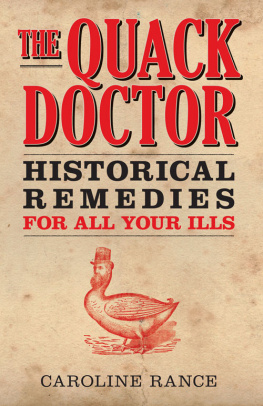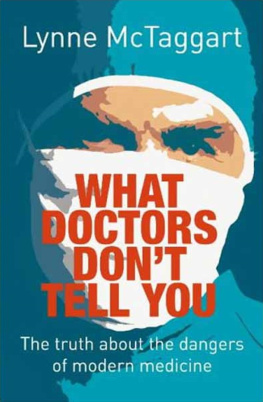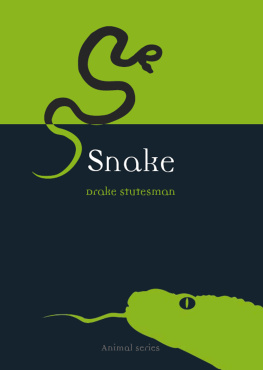
Quackery
A
Brief History
of the
Worst Ways
to Cure
Everything
Lydia Kang, Md
Nate Pedersen
Workman Publishing New York
Dedication
This one is for April for clearing the way.
NP
To my father and brother, two of the best and most un-quacky physicians I know. And to my mother, whose love can heal just about anythin.
LK
Contents
Prescriptions from the Periodic Table
Natures Gifts
Slicing, Dicing, Dousing, and Draining
Creepy Crawlies, Corpses, and the Healing Power of the Human Body
Waves, Rays, and Curious Airs
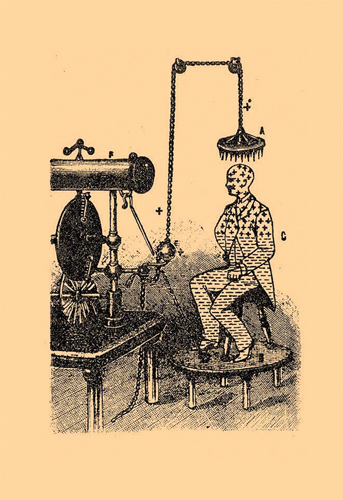
For shocks and giggles: a Russian electric shower.
Introduction
Humbug. Charlatan. Quack. Con artist. Swindler. Trickster.
For a long time, words like these were used to describe those who preyed on our fear of death and sickness by peddling wares that didnt work, or hurt us, or sometimes killed us.
But quackery isnt always about pure deception. Though the term is usually defined as the practice and promotion of intentionally fraudulent medical treatments, it also includes situations when people are touting what they truly believe works. Perhaps theyre ignoringor challengingscientific fact. Or perhaps they lived centuries ago, before the scientific method entered civilizations consciousness. Through a modern-day lens, these treatments can seem absolutely absurd. Weasel nuts as a contraceptive? Bloodletting to help cure blood loss? Burning hot irons to fix the lovelorn? Yep.
But behind every misguided treatmentfrom Ottomans eating clay to keep the plague away to Victorian gents sitting in a mercury steam room for their syphilis to epilepsy sufferers sipping gladiator blood in ancient Romeis the incredible power of the human desire to live. And this drive is downright inspiring: We are willing to ingest cadavers, subject ourselves to boiling oil, and endure experimental treatments involving way too many leeches, all in the name of survival.
This drive also leads to incredible innovation. After a long battle to achieve lower death rates (and reduce screaming), doctors now perform surgery when were blissfully anesthetized. As an added bonus, their hands arent dripping with pus from the prior surgery case. We can fight cancer on a molecular level, in ways our ancestors never dreamed. Diseases like syphilis and smallpox are no longer an enormous burden on society. Its easy to forget that along the way to this progress, innovators were scoffed at and shamed; patients suffered through their doctors mistakes, and sometimes even died. None of todays medical achievements would have occurred without challenging the status quo.
But there is, of course, a dark side. That desire to heal and live longer is about as addictive as opium itself. Scientists, impersonating Icarus, try to best one another in making drugs more effective and more potent. Emperors send their alchemists on ridiculous quests to unlock immortality. Charlatans decide that you need a new pair of implanted goat testicles. Sometimes, were so desperate for a cure, well reach for anything.
Even radioactive suppositories.
Lets be honest. Being healthy isnt enough for many of us. We want moreeternal youth, perfect beauty, boundless energy, the virility of Zeus. And herein the quack truly thrives. This is where we start to believe that arsenic wafers will give us that peaches-and-cream complexion and that elusive gold elixirs will fix broken hearts. Hindsight makes it easy to laugh at many of the treatments in this book, but no doubt Dr. Google has assisted you in searching for a simple cure to a pesky problem. None of us are immune to wanting a quick fix. A hundred years ago, you might have been the person buying that strychnine tonic!
Clearly, we needed to be saved from quacksand from ourselves. The rise of patent medicines in the nineteenth century drove America to its turning point. With the Pure Food and Drug Act of 1906, the United States cracked down on false and misleading labels, unsafe ingredients in food, and the adulteration of medical and food products. In 1930, the watchdog bureau became known as the Food and Drug Administration (FDA). Later laws in 1938 covered medical devices and cosmetics, and a 1962 law added scientific rigor to the drug industry.
Did regulations cure America of its quackery? Of course not. Despite modern scientific breakthroughs, the FDA, and a pretty damn good understanding of how the human body works, quackerys tentacles still touch almost every aspect of the healthcare and cosmetics industry. This is why youll read a present-day update in many of our chapters. In a surprising twist, some quack cures, like leeches, have transformed into real, working treatments. But in many cases (like eating tapeworms for weight loss), quackery simply lingers on and on... and on.
To continue battling charlatans, we need a more complete understanding of how the human body functions and how disease works. We also need to keep open minds about ways to combat disease and improve longevity. Finally, we need to keep our guard up. There will always be quacks out there ready to take full advantage of human desperation before science and medicine can find solid solutions.
So how does one become a wary, discerning consumer with an open mind? Beware that quack medicine often relies on anecdotal evidence, or the endorsement of a celebrity physician, to convince us something works. Also, look deeper into claims made that studies show XYZ is amazing. These studies should have been rigorously performed, peer-reviewed, and repeatedly tested by various entities to show effectiveness. And they rarely are. Our own biasesconfirmation bias, ingroup bias, postpurchase rationalization, and a host of othersall have heady effects on our ability to systematically evaluate treatments as varied as herbal cough drops, electronic cancer zappers, or pricey plasma-injected facials.
In the end, it comes down to a few simple questions. Do you believe theres solid evidence that its going to work? Are you willing to risk the side effects? And we mustnt forgethow deep are your pockets?
After all, this book really is just a brief history of the worst ways to cure everything. No doubt, there are more worst ways yet to come.
Authors Note
This book is by no means an exhaustive encyclopedia of all treatments we now deem to be ridiculousfor that reason, youll notice we focus mostly on past treatments rather than current ones. Furthermore, there were many topics we would have liked to cover in depth, but which we believe belong in their own book with a completely different tone, including religious-based medical quackery and the gross injustices of gay conversion therapy and racism-based treatments.

Elements

Prescriptions from the Periodic Table

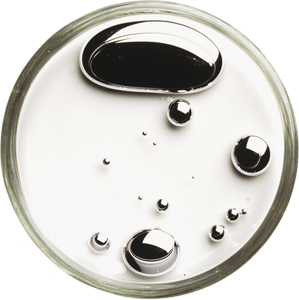
Mercury
Of Roman Gods, Toilet Archeology, Drooling Syphilitics, an Immortal Wannabe, and Erroneous Snakes
Next page


